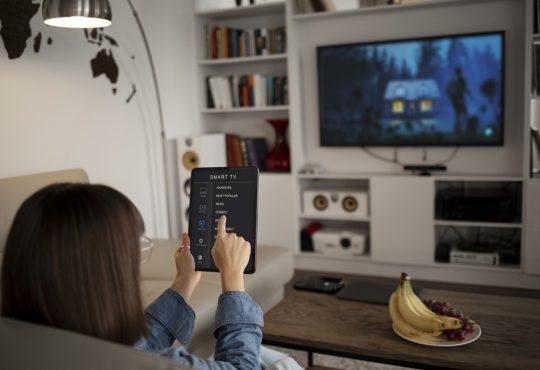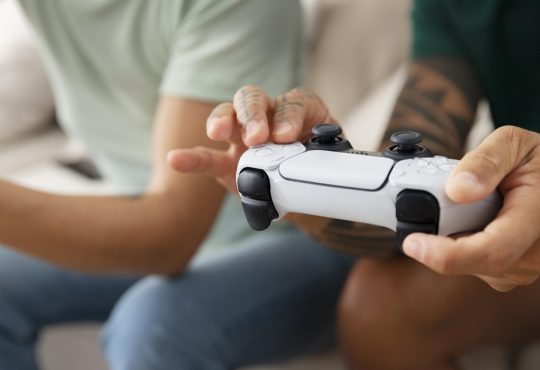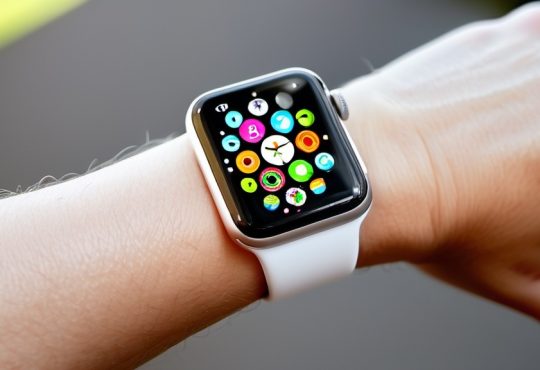Choosing your first tech device is an exciting yet daunting task. With countless options available, from smartphones and tablets to laptops and smartwatches, finding the right device can be overwhelming. To simplify the process and help you make an informed decision, consider the following factors: your primary use, operating system, specifications, display quality, portability, budget, and warranty. This comprehensive guide will walk you through each of these aspects to ensure you choose a tech device that best fits your needs.
Define Your Purpose
The first step in selecting a tech device is to clearly define its primary purpose. This will help you narrow down the choices and focus on devices that best align with your needs.
1. Productivity
If your main goal is productivity, such as managing work tasks, creating documents, or handling emails, consider a device that excels in performance and has a robust set of productivity features. For instance, laptops and tablets with keyboard attachments are ideal for multitasking and writing. Look for features like good battery life, efficient processors, and the ability to run productivity software smoothly.
For example, if you need a device for extensive document editing and multitasking, a laptop with a powerful processor (such as Intel Core i5 or i7), ample RAM (8GB or more), and a large storage capacity would be suitable. Tablets with keyboard support, such as the Apple iPad Pro with a Magic Keyboard or the Microsoft Surface Pro, can also serve productivity needs effectively.
2. Gaming
For gaming enthusiasts, the device’s graphics capabilities, processing power, and cooling efficiency are crucial. High-performance gaming devices need to handle demanding graphics and provide a smooth gameplay experience. Look for devices with dedicated graphics cards (GPUs), high refresh rates, and fast processors. A gaming laptop or a high-end gaming console would be appropriate for this use.
For instance, gaming laptops like the ASUS ROG Zephyrus or the Alienware X17 offer powerful GPUs and high refresh rate displays, making them well-suited for modern gaming. Additionally, gaming consoles like the PlayStation 5 or Xbox Series X provide excellent gaming experiences with cutting-edge graphics and fast load times.
3. Entertainment
If your primary use is entertainment, such as streaming movies, listening to music, or browsing social media, prioritize a device with a high-quality display, good audio capabilities, and a user-friendly interface. Tablets and smartphones are often preferred for their portability and ease of use.
For optimal entertainment experiences, devices like the Apple iPad Air or Samsung Galaxy Tab S8 offer high-resolution displays and strong audio performance. Smartphones with vibrant screens and powerful speakers, such as the iPhone 15 or Google Pixel 8, are also excellent choices for media consumption on the go.
4. Everyday Tasks
For everyday tasks like web browsing, checking emails, and light app usage, a more basic device may suffice. Entry-level tablets, budget smartphones, and affordable laptops can handle these tasks efficiently without breaking the bank.
Devices such as the Samsung Galaxy A series smartphones or the Lenovo IdeaPad series laptops offer good performance for everyday activities at a lower price point, making them suitable for users who do not require high-end specifications.
Operating System
The choice of operating system (OS) significantly impacts your user experience, compatibility with apps, and overall device functionality. Different operating systems cater to various preferences and use cases.
1. iOS
Apple’s iOS is known for its smooth user experience, high security, and seamless integration with other Apple products. If you are already invested in the Apple ecosystem, iOS devices such as the iPhone, iPad, and MacBook offer a cohesive and user-friendly experience. iOS is also praised for its robust app store and regular updates.
2. Android
Android offers greater flexibility and customization compared to iOS. With a wide range of devices from various manufacturers, you can choose an Android device that fits your budget and preferences. Android is known for its integration with Google services and a broad selection of apps. If you prefer a device that can be tailored to your specific needs and offers more choices in terms of hardware, Android may be the right option.
3. Windows
Windows is a versatile operating system used in laptops and tablets. It supports a wide range of software applications, making it suitable for productivity, gaming, and general use. Windows devices, such as the Microsoft Surface Pro or Dell XPS laptops, offer compatibility with various business applications and have strong support for gaming.
4. macOS
macOS is exclusive to Apple’s MacBook and iMac devices. It is known for its intuitive user interface, strong security features, and seamless integration with other Apple products. If you prefer a device with a sleek design and robust performance for tasks like content creation or software development, macOS devices may be the best choice.
Specifications
The specifications of a tech device determine its performance and usability. Evaluating key specifications will help you choose a device that meets your needs.
1. Processor Speed
The processor, or CPU, is the brain of the device and influences how well it performs tasks. Higher clock speeds and more cores generally result in better performance. For productivity and gaming, look for devices with modern processors like Intel Core i5 or i7, AMD Ryzen 5 or 7, or Apple’s M1 or M2 chips.
2. RAM
Random Access Memory (RAM) affects how well a device handles multitasking. More RAM allows you to run multiple applications simultaneously without slowing down the system. For most users, 8GB of RAM is sufficient, but if you handle heavy tasks or gaming, consider devices with 16GB or more.
3. Storage Capacity
Storage determines how much data, apps, and files you can store on your device. Devices typically offer either hard disk drives (HDDs) or solid-state drives (SSDs). SSDs are faster and more reliable. For general use, 256GB to 512GB of storage is usually adequate, but gamers or content creators may need 1TB or more.
4. Battery Life
Battery life is crucial, especially if you are frequently on the go. Look for devices with long-lasting batteries to avoid frequent charging. Laptops should ideally have at least 8 hours of battery life, while tablets and smartphones can vary from 10 to 20 hours depending on usage.
Display Quality
The display is one of the most critical features, especially for media consumption, gaming, and creative tasks. Consider the following factors when evaluating display quality:
1. Size
The size of the display impacts how comfortable it is to use the device for various tasks. Larger screens are better for watching videos and multitasking, while smaller screens offer greater portability. For laptops, a screen size between 13 to 15 inches is common, while tablets and smartphones typically range from 7 to 12 inches.
2. Resolution
Resolution determines the clarity and detail of the screen. Higher resolutions provide crisper visuals. Common resolutions include Full HD (1920×1080), Quad HD (2560×1440), and 4K (3840×2160). For tasks like video editing or high-definition gaming, higher resolutions offer a better experience.
3. Panel Type
Different panel types, such as IPS (In-Plane Switching), OLED (Organic Light Emitting Diodes), and AMOLED (Active Matrix Organic Light Emitting Diodes), offer varying levels of color accuracy, brightness, and contrast. IPS panels provide good color accuracy and wide viewing angles, while OLED and AMOLED panels offer deeper blacks and more vibrant colors.
Portability
If you need a device that you can easily carry around, portability is a key consideration. Assess the weight and size of the device based on your lifestyle and usage patterns.
1. Weight
Lighter devices are easier to carry, making them ideal for frequent travel or commuting. For laptops, aim for a weight of 3 pounds or less for maximum portability. Tablets and smartphones are generally lightweight, but consider the weight if you plan to use them extensively.
2. Size
The size of the device impacts how easy it is to transport. Laptops with compact designs, such as ultrabooks or 2-in-1s, offer a balance between performance and portability. Tablets and smartphones are naturally more portable, but ensure they fit comfortably in your bag or pocket.
Budget
Setting a budget helps narrow down your options and ensures you get the best value for your money. Tech devices come in a wide range of prices, and finding a device that fits your needs within your budget is crucial.
1. Determine Your Budget
Start by determining how much you are willing to spend. Consider any additional costs, such as accessories or extended warranties. Compare devices within your budget to find the best combination of features and performance.
2. Compare Options
Once you have a budget, compare different devices to find the best value. Look for deals, discounts, and bundles that offer additional accessories or services. Evaluate each device’s features and specifications to ensure it meets your needs without exceeding your budget.
Warranty and Support
A warranty and reliable customer support are essential for long-term satisfaction with your tech device. Check the warranty terms and support options before making a purchase.
1. Warranty
Most tech devices come with a standard warranty that covers defects and repairs for a specific period. Check the length of the warranty and what it includes. Some manufacturers offer extended warranties or protection plans for an additional cost.
2. Customer Support
Good customer support can make a significant difference if you encounter issues with your device. Research the manufacturer’s reputation for customer service and support. Look for options like phone support, online chat, or in-person service centers to ensure you have access to help if needed.
Choosing your first tech device involves several considerations, from defining your primary use and selecting the right operating system to evaluating specifications and display quality. By assessing factors such as portability, budget, and warranty, you can make an informed decision that meets your needs and preferences. Take the time to research and compare options to find the perfect tech device that will enhance your productivity, entertainment, and everyday activities. With the right choice, you’ll be well-equipped to





